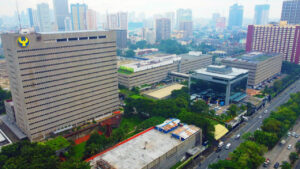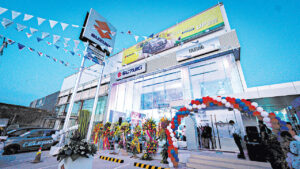Central bank looking to lower transaction fees for remittances

THE BANGKO SENTRAL ng Pilipinas (BSP) is looking to lower transaction fees for remittances through its partnership with other central banks under the Bank for International Settlements’ (BIS) Nexus Project.
BSP Governor Eli M. Remolona, Jr. said the central bank is working with its Association of Southeast Asian Nations (ASEAN) peers to develop the Nexus payment system.
“From then on, because this system is designed to be interoperable across banks around the world, we hope to go global and, in the process, reduce the fees for remittances,” Mr. Remolona said during the Philippine economic briefing held in San Francisco, California on Thursday.
“Right now, it costs about 5% to send money to the Philippines when it comes to retail payments. We want to bring it down to 3%, and eventually bring it down to 1%,” he added.
Under the United Nations’ sustainable development goals, countries aim to reduce transaction costs to below 3% and eliminate remittance corridors with costs higher than 5% by 2030.
Based on a June report from the World Bank, sending remittances cost an average of 6.2% of the amount sent globally in the second quarter. Digital services accounted for 30% of all services remittance prices worldwide during the period.
Cash remittances from overseas Filipino workers (OFWs) jumped by 2.6% to $2.91 billion in September from $2.84 billion in the same month last year, latest BSP data showed. This was the highest in two months or since $2.99 billion in July.
For the first nine months of the year, money sent home by OFWs grew by 2.8% year on year to $24.49 billion from $23.83 billion in the same period in 2022.
Nexus, which is a prototype developed by the BIS Innovation Hub Singapore Centre with the central banks of Italy, Malaysia and Singapore, connects payment system operators from several economies.
Meanwhile, Mr. Remolona said the BSP is making efforts to boost the Philippine banking system, including working on an open finance framework that would allow lenders more access to consumer data.
With the open finance framework, banks would be able to access more analytical platforms, he said. In turn, they can expand their operations into other financial services.
The PH Open Finance Pilot is a collaborative initiative of volunteer financial institutions to explore the use of application programming interface technologies to enhance financial products and services.
The central bank hopes streamlining open finance will be useful in know your customer and credit underwriting processes. It is expected to boost financial inclusion in the country.
DIGITAL BANKSMr. Remolona added that the BSP may give the six digital banks currently operating in the country a few more years to “prove themselves” before opening up the sector to new players.
“The digital banks seem to be doing very well when it comes to deposits. Online deposits seem easy enough. The hard part is the asset side, how do they make loans online. That’s a struggle,” he said.
“For now, we have six licenses. We might give them a few more years to prove themselves and we may open it up,” the BSP chief added.
The central bank capped the number of digital banking licenses to six in 2021 to monitor the development of the sector, ensure competition, and boost its own capacity to regulate these kinds of lenders.
The six online lenders operating in the Philippines are Tonik Digital Bank, Inc.; GOtyme of the Gokongwei Group and Singapore-based Tyme; Maya Bank of Voyager Innovations, Inc.; Overseas Filipino Bank, a subsidiary of Land Bank of the Philippines; UNObank of DigibankASIA Pte. Ltd.; and UnionDigital of Union Bank of the Philippines, Inc.
The BSP wants to digitize 50% of retail transactions and increase the number of Filipino adults with bank accounts to 70% by the end of this year. — Keisha B. Ta-asan




